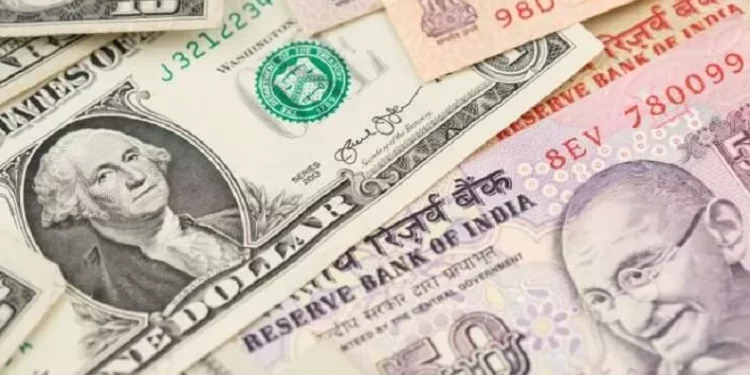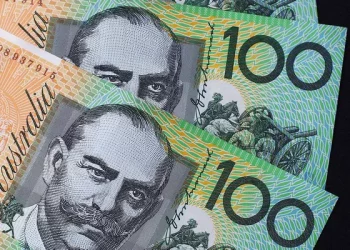In the bustling realm of global finance, the exchange rate between the US dollar and the Indian rupee stands as a key indicator, watched closely by investors, businesses, and policymakers alike. A simple glance at this rate can reveal a lot about the economic health of both the United States and India, as well as the broader trends in international trade and investment. But what exactly drives the fluctuations in the USD – rupee rate? Let’s dive in and explore.
Conversely, when the Reserve Bank of India (RBI) hikes interest rates in India while US rates remain stable or decline, Indian assets become more enticing. Foreign investors then start buying Indian assets, increasing the demand for rupees. With more people wanting to hold rupees, its value relative to the dollar rises, and the USD – rupee rate comes down.
Macroeconomic Factors
Interest Rates
Interest rates set by central banks are among the most powerful drivers of currency exchange rates. In the United States, decisions made by the Federal Reserve (the Fed) reverberate across global financial markets. When the Fed raises interest rates, US – denominated assets such as Treasury bonds and savings accounts become more attractive to investors around the world. This is because these assets offer higher returns, making them a more appealing place to park money.
As a result, investors often sell their Indian – denominated assets, like Indian stocks or bonds, and convert the rupees into US dollars to invest in the US. This increased demand for US dollars and the simultaneous increase in the supply of rupees in the foreign exchange market cause the rupee to depreciate against the dollar. In other words, it takes more rupees to buy one US dollar, and the USD – rupee exchange rate goes up.
Inflation
Inflation has a significant impact on currency values. When a country experiences high inflation, the purchasing power of its currency decreases. If India’s inflation rate is higher than that of the United States, Indian goods and services become relatively more expensive compared to American ones. This makes Indian exports less competitive in the global market. Foreign buyers are less likely to purchase Indian products because they can get similar items from the US or other countries at a lower price.
At the same time, higher inflation in India makes imports more attractive. Indian consumers and businesses find it cheaper to buy foreign – made goods. As a result, India’s trade deficit widens, meaning the country is importing more than it is exporting. To pay for these increased imports, India needs to buy more US dollars in the foreign exchange market. The higher demand for US dollars drives up the USD – rupee rate.
Trade and Current Account
Trade Balance
The trade balance between the United States and India plays a crucial role in determining the USD – rupee rate. India is a major importer of goods and services, especially energy products like oil. When India imports a large amount of goods from the US or other countries that trade in US dollars, it needs to pay for these imports in US dollars. This creates a high demand for US dollars in the Indian foreign exchange market.
For example, if India’s imports of US – made machinery, electronics, and agricultural products increase, the country’s businesses and government will need to exchange more rupees for US dollars to complete these transactions. This increased demand for dollars relative to rupees causes the rupee to depreciate and the USD – rupee rate to rise.
Current Account Deficit/Surplus
The current account is a broader measure that includes not only trade in goods but also services, income from investments, and unilateral transfers. A current account deficit in India means that the country is spending more on imports of goods and services, and paying out more in investment income to foreign investors, than it is earning from exports and investment income from abroad.
When India has a current account deficit, it needs to finance this shortfall by attracting foreign investment. To do this, it often has to offer more favorable terms to foreign investors, such as higher – yielding assets. This can put pressure on the rupee, as the country has to keep a steady inflow of foreign currency (usually US dollars) to cover its deficits. The increased demand for US dollars to finance the current account deficit leads to a depreciation of the rupee and an increase in the USD – rupee rate.
Political and Geopolitical Events
Domestic Politics in India
Political stability in India is essential for maintaining a stable currency. When there is political unrest, uncertainty, or a change in government policies, it can create a sense of unease among investors. For instance, if there are protests against new economic reforms proposed by the Indian government, or if there is a lack of clarity in policy – making, foreign investors may become hesitant to invest in India.
This can lead to a flight of capital, where investors sell their Indian assets and move their money out of the country. As they convert their rupees into US dollars to take their money abroad, the supply of rupees in the foreign exchange market increases, while the demand for US dollars rises. This results in the rupee depreciating against the dollar, and the USD – rupee rate goes up.
US Political Landscape
Political events in the United States also have an impact on the USD – rupee rate. Decisions made by the US government regarding trade policies, such as imposing tariffs on Indian goods or changing trade agreements, can directly affect the economic relationship between the two countries. If the US imposes high tariffs on Indian exports like textiles or IT services, Indian exporters will face difficulties selling their products in the US market.
This can lead to a decrease in India’s export earnings, reducing the supply of US dollars in the Indian foreign exchange market. At the same time, Indian businesses may need to import more US – made components or technology to stay competitive, increasing the demand for US dollars. The combined effect is a depreciation of the rupee and an increase in the USD – rupee rate.
Geopolitical Tensions
Geopolitical tensions around the world can also influence the USD – rupee rate. For example, conflicts in the Middle East can disrupt oil supplies, which is a major concern for India as it is a large importer of oil. If there are disruptions in oil production or transportation due to geopolitical issues, the price of oil can spike. India will then have to pay more in US dollars to import the same amount of oil.
This increased demand for US dollars to pay for higher – priced oil imports puts downward pressure on the rupee. Additionally, geopolitical tensions can also create a sense of global economic uncertainty. In such situations, investors tend to move their money towards safe – haven currencies like the US dollar. This increased demand for the US dollar as a safe – haven asset further strengthens the dollar and causes the rupee to depreciate, driving up the USD – rupee rate.
Conclusion
In conclusion, the exchange rate between the US dollar and the Indian rupee is influenced by a multitude of factors. Macroeconomic variables such as interest rates and inflation rates play a fundamental role, shaping the long – term trends in the exchange rate. The trade and current account positions of both countries also have a significant impact, as they determine the supply and demand for the two currencies in the foreign exchange market.
Finally, the policies and actions of the central banks, the Reserve Bank of India and the Federal Reserve, are crucial in managing and influencing the exchange rate. Understanding these factors is essential for anyone involved in international trade, investment, or finance. By keeping a close eye on these drivers, businesses can better manage their currency risks, investors can make more informed decisions, and policymakers can formulate effective economic policies to maintain a stable and healthy exchange rate environment. The dynamics of the USD – rupee rate are complex and ever – changing, but with a comprehensive understanding of these influencing factors, one can gain valuable insights into the movements of this important exchange rate and navigate the global financial landscape more effectively.
Related topics

























